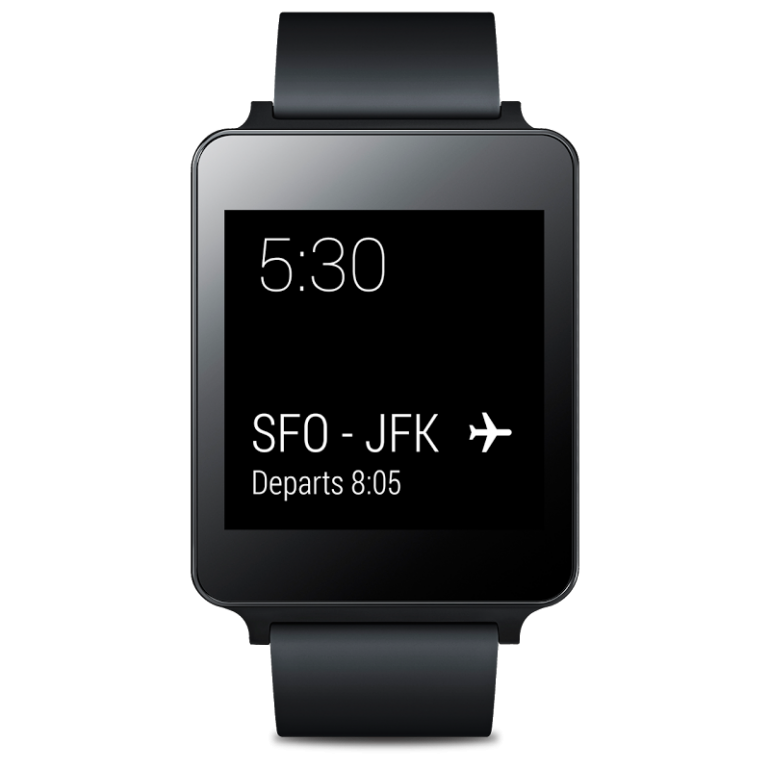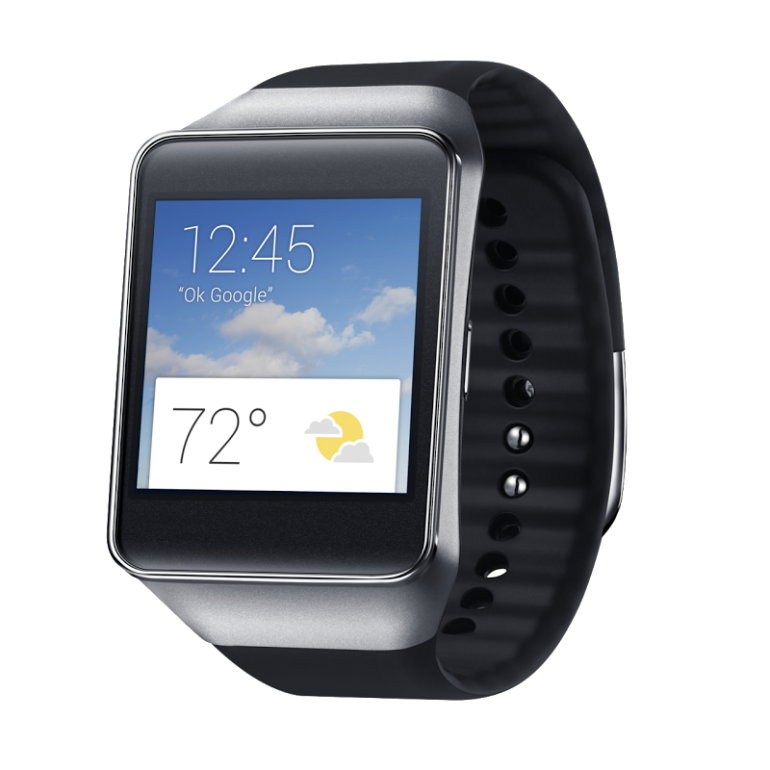The Android Wear experience: Google's smartwatches
With the average mobile phone user checking his/her smartphone 150 times a day, it’s safe to say we are more connected than ever before. Smartphones are now an essential extension of our being but as we physically unlock our device to perform critical functions (voice calls, text messages, email) on an alarmingly repetitive basis, the advent of wearable devices looks geared to put the phone firmly back in our pockets.
Instead, the emphasis lies in the time-honoured tradition of glancing at our wrists -- and Google reckons its Android Wear line has the design and software chops to make a splash in the smartwatch market.

Pebble and Samsung’s Galaxy Gear line may have laid down the foundation but Google’s smartwatch platform promises the smarts of Google Now to deliver useful information to our wrists -- all without our involvement, using a voice-driven interface and an active Android-based app development community. Google also has an army of OEMs and even dedicated fashion brands to deliver smartwatch hardware to suit almost any taste.
Out of the gate, Android Wear is launching with two smartwatches, the G Watch from LG and Samsung Gear Live, both of which retail for $250. So how does the hardware stack up, and is an Android Wear smartwatch really a must-have accessory for your smartphone?
LG's G Watch versus the Samsung Gear Live
From a design standpoint, there’s nothing remarkable about the G Watch and Gear Live, with neither device screaming 'fashion accessory'. From the rectangular watch face to the rubber wrist bands, both watches have more in common with the old Casio digital watches than a sophisticated timepiece.
The G Watch is particularly nondescript, with no trace of design flair whatsoever, while the Gear Live closely resembles the company’s previous offerings -- namely the Galaxy Gear 2 -- with chrome edges that adorn the rectangular watch face along with a metal clamp. We prefer the traditional buckle strap design of the G Watch than the frustrating clamp mechanism of the Gear Live, which requires squeezing a pair of metal prongs into two finicky holes, resulting in a looser fit than we would like.
Both watches use a standard 22mm strap head and can be personalised with any standard watch strap.
The Gear Live’s charging cradle is also cumbersome to attach, whereas the G Watch’s magnetic cradle is well designed and comes complete with a magnetic coupler that guides the underside of the watch face into the charging position.
Under the hood, both watches share the same specs: a Qualcomm Snapdragon 400 chipset, 512MB of RAM, 4GB of internal storage, Bluetooth 4.0 connectivity and 9-axis sensors (gyro/accelerometer/compass). For context, the specs are very similar to what you would normally find in a low-range Android smartphone like the Moto G.
Both adhere to the IP67 specification, which means they're dust resistant and can withstand being submerged in up to 1 metre of water -- so you can shower or swim with them on.
At 300mAh, the Samsung has a slightly lower capacity battery on board versus LG’s 400mAh, but both devices required charging at the end of every day.

The Gear Live has a sharper 1.63-inch screen at 320x320 resolution, thanks to the use of AMOLED display technology, which makes the screen look brighter and more vibrant. The G Watch’s 280x280 IPS LCD display looks washed out in comparison and doesn’t perform as well in sunlit environments.
The Gear Live also has a built-in heart rate sensor, but we found it to be inaccurate by 10-15 beats. Oddly enough, the G Watch doesn’t have a physical power switch so if you do accidentally turn it off then the only way to turn it back on is by connecting it to the charger. The Gear Live’s dedicated power button also offers other conveniences such as the ability to call up the Settings menu by holding the button down.
The Android Wear experience
The software experiences of both G Watch and Gear Live are identical thanks to Google’s vision of ensuring a consistent user experience across all its smartwatches. It’s a departure from the company’s Android smartphone philosophy which essentially gives hardware manufacturers free reign to customise the software experience in whatever way they wish.
The only difference we found is the custom watch face designs, with the G Watch offering 24 as opposed to the Gear Live’s 13.
Anyone familiar with Google Now on an Android smartphone will feel right at home with the card interface of Android Wear. Rotating your wrist will ‘wake’ the screen from its time keeping duties and display missed calls, text messages, emails, relevant sports scores, steps taken (using the built-in pedometer), weather, next available bus or train information if you regularly catch public transport, the travel time to home or work if you drive, your next meeting or appointment according to your calendar, and parcel delivery tracking information.
In addition, any notifications from apps on your phone will also display on an information card -- so your eBay bidding status or social media notifications will all appear on the smartwatch. If you don’t want to clutter up your smartwatch with every minor notification, you can elect to disable notifications from specific apps using the companion Android Wear app on your smartphone.
Swiping up and down will scroll through the various information cards, with the background constantly changing to reflect the contents of each card. Swiping to the left will give you more options, while cards can be dismissed altogether by swiping to the right. You can’t interact with notifications beyond just viewing and dismissing them -- for anything else, you’re going to need to use your smartphone. Even basic tasks like replying to a text message or a tweet will require you to use your phone. You can, however, create a new text message, email or initiate a voice call by using Google Now’s voice commands.
Voice commands lack zip
The voice commands, while serviceable, aren't as accurate as something like the experience on the Moto X. Dictating anything longer than a sentence is almost impossible and the voice recognition also has a disdain for pauses -- breaks in dictation are met with the assumption that you’re done, followed by an attempt to send the incomplete message.
Google Now isn’t trained to recognise your voice, either, so it’s not smart enough to know who is saying 'Okay Google' -- making it easy for anyone to send messages on your behalf.
You can also use voice commands to set a reminder or alarm and view your calendar events, and different apps can be assigned to specific voice commands. For example, "Okay Google -- take a note" can be mapped to Evernote instead of the default Google Notes app.
The best feature is the ability to request turn-by-turn directions from Google Maps, which will promptly display basic directions and the occasional buzz of the wrist to warn of approaching turns. Android Wear smartwatches lack speakers so you will need your smartphone for voice directions.
Equally useful is the ability to play, pause and skip tracks on your favourite music app directly from your wrist, making it the ideal jogging or bike riding companion. However, adjusting the volume will require you to fumble around with your smartphone.
Sparse app library
Outside of notifications, apps that have been specifically designed for Android Wear will offer additional functionality.
For example, the Allthecooks app displays step-by-step recipes -- which is right at home on a smartwatch when you’re hands are likely to be tied up cooking. Meanwhile, language learning app Duolingo allows you to brush up on your French with flash cards appearing on your wrist. The potential to do more with smartwatch apps is there, with Google showing off US-only apps like Eat24, which allows you to order a pizza entirely from your smartwatch, or request a car pick-up via Lyft.
As it stands -- and for Australian users at least -- the potential remains largely untapped until more developers get on board. Right now, there are only 34 apps specifically designed for Android Wear but this should change quickly with time.
A taste of the wearable future
After using a smartwatch for two weeks, I have found myself checking my phone a lot less. Being able to know what’s going on by simply glancing at your wrist might not sound like much but once you experience the convenience, it’s hard to go back. I never missed a call either, thanks to the smartwatch’s display lighting up and vibrating with every incoming call. I also found that I can leave my phone on silent -- which is a big plus, especially for anyone who works in an office.
As long as you’re comfortable with giving Google all the relevant information, Google Now’s information cards and their ability to display useful information before you even request it are a natural fit for a smartwatch as opposed to a smartphone, where such information tends to be ignored. The ability to quickly fire off short text messages or emails from your watch is useful but the inability to reply to notifications is a frustrating omission and suggests that Google pushed this release out the door a bit quicker than they may have liked.
Random disconnection was also apparent on more than a few occasions despite the phone being within the desired Bluetooth range.
But despite these early teething problems, Android Wear has convinced me that smartwatches are here to stay. The use case is already compelling and will only continue to grow as developers release more apps for the platform.
The biggest problem remains the hardware. The G Watch and Gear Live are bland designs to say the least and for Android Wear to hit mass-market appeal it needs fashion conscious hardware. It needs to be a piece of luxury that people actually want to put on their wrist, and it shouldn’t be something that requires charging every day.
If you simply need to rush out and buy a smartwatch today then I would recommend the Gear Live over the G Watch. But for everyone else, wait for Motorola's Moto 360, which looks to tick all the boxes and is due out before the end of the year.
















